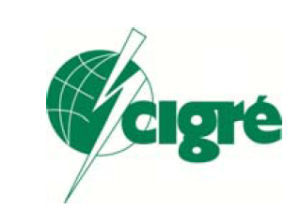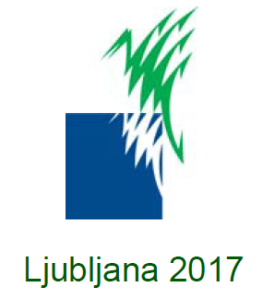 From 18 to 19 September, in Ljubljana (Slovenia), under the CIGRE organization, a 2-day conference on the impact of lightning on power systems. After two guest lectures various topics were discussed since the importance of thunderstorm detection networks, the experiment on HT surge arresters online, lightning ground measurement at the foot of pylons to transformer models for surge due to lightning simulation.
From 18 to 19 September, in Ljubljana (Slovenia), under the CIGRE organization, a 2-day conference on the impact of lightning on power systems. After two guest lectures various topics were discussed since the importance of thunderstorm detection networks, the experiment on HT surge arresters online, lightning ground measurement at the foot of pylons to transformer models for surge due to lightning simulation.
SEFTIM collaborated on a paper entitled “Characteristics and distribution of intense cloud-to-ground flashes in Western Europe” with Stephane Pedeboy from Météorage (France), Marina Bernardi from CESI (Italy) and Wolfgang Schulz from ALDIS-OVE Services (Austria ).
 This work aimed at analysing the occurrence of Intense Cloud-to-Ground (ICG) in Western Europe, including a large part of maritime areas, defined as lightning flashes exhibiting at least one return stroke peak current larger than 200 kA based on lightning data collected by EUCLID between 2007 and 2016. As expected, the rate of ICG is low in average, about 0.18 % of the total Cloud-to-Ground (CG), but because of a pronounced seasonal trend it can increase up to 1.5% in winter. Around 70% of ICG occurring over the Atlantic Ocean and the Mediterranean Sea are of negative polarity whereas, in around the same proportion, they are positive over the continental regions. The geographical distribution of ICG shows a clear enhancement of ICG occurrences during winter time along coastal areas exhibiting elevated terrain, in northern Spain and western Italy and in Balkans. In these regions ICG are mainly located in land and surprisingly their polarity is negative on the contrary to the general trend stating most ICG are positive on the Continent. The discrepancies observed in the geographical, seasonal and polarity distributions are thought to be related to the different type of thunderstorms occurring across Europe and particularly oceanic and Mediterranean winter and continental deep-convective clouds. Finally, some high-density areas along Italian or Balkan coastlines can reach up to 0.45 ICG/km²/year, both polarities combined.
This work aimed at analysing the occurrence of Intense Cloud-to-Ground (ICG) in Western Europe, including a large part of maritime areas, defined as lightning flashes exhibiting at least one return stroke peak current larger than 200 kA based on lightning data collected by EUCLID between 2007 and 2016. As expected, the rate of ICG is low in average, about 0.18 % of the total Cloud-to-Ground (CG), but because of a pronounced seasonal trend it can increase up to 1.5% in winter. Around 70% of ICG occurring over the Atlantic Ocean and the Mediterranean Sea are of negative polarity whereas, in around the same proportion, they are positive over the continental regions. The geographical distribution of ICG shows a clear enhancement of ICG occurrences during winter time along coastal areas exhibiting elevated terrain, in northern Spain and western Italy and in Balkans. In these regions ICG are mainly located in land and surprisingly their polarity is negative on the contrary to the general trend stating most ICG are positive on the Continent. The discrepancies observed in the geographical, seasonal and polarity distributions are thought to be related to the different type of thunderstorms occurring across Europe and particularly oceanic and Mediterranean winter and continental deep-convective clouds. Finally, some high-density areas along Italian or Balkan coastlines can reach up to 0.45 ICG/km²/year, both polarities combined.
SEFTIM has also written in collaboration with Mitch Guthrie (USA) a paper “Risk assessment of lightning-induced surges on PV Systems” dealing with the risk due to overvoltages induced on photovoltaic systems (continuation of the paper on damage from direct lightning strikes presented at APL 2017 in Thailand).
 This paper applies the risk method of IEC 62305-2 to PV systems and derives a simplified method to determine Surge Protective Devices are needed or not especially on the DC side of the inverter taking into account loss of production. The method is based on the length of DC cabling and the flash ground density and lead to a table based on 3 typical cases. The hypotheses have been provided by real users and installers, as well as their associations. When necessary, these hypotheses have been formatted in such a manner that the method described in IEC 62305-2 applies. When a Lightning Protection System is implemented on a building supporting a PV system, the determination of the need of SPDs is purely academic and not related to risk analysis. As such, this case will not be addressed in the present study. Three main cases have been selected as representative of PV systems. PV for domestic application, PV on an office building and a PV farm. This study only addresses the risk of induced surges to PV systems due to indirect strikes in the vicinity of the system.
This paper applies the risk method of IEC 62305-2 to PV systems and derives a simplified method to determine Surge Protective Devices are needed or not especially on the DC side of the inverter taking into account loss of production. The method is based on the length of DC cabling and the flash ground density and lead to a table based on 3 typical cases. The hypotheses have been provided by real users and installers, as well as their associations. When necessary, these hypotheses have been formatted in such a manner that the method described in IEC 62305-2 applies. When a Lightning Protection System is implemented on a building supporting a PV system, the determination of the need of SPDs is purely academic and not related to risk analysis. As such, this case will not be addressed in the present study. Three main cases have been selected as representative of PV systems. PV for domestic application, PV on an office building and a PV farm. This study only addresses the risk of induced surges to PV systems due to indirect strikes in the vicinity of the system.

